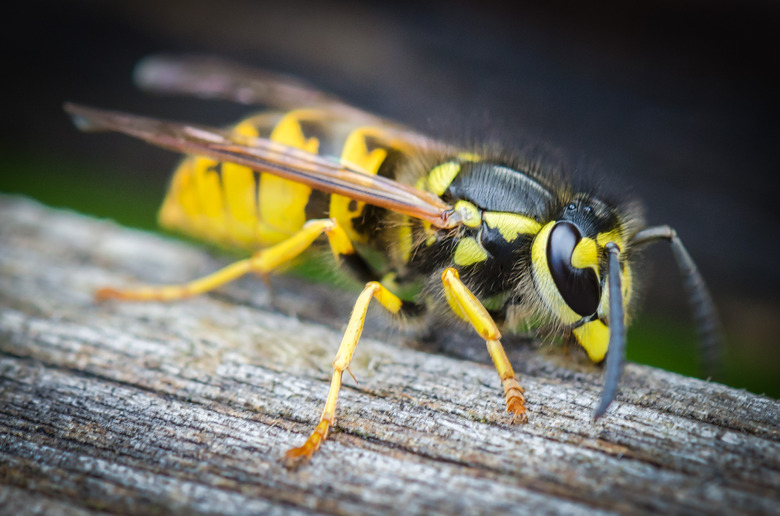How To Identify A Queen Wasp
You've heard of queen bees and the Queens of England, but what about a queen wasp or a queen hornet? These insects have queens as well, and a queen wasp is just as important to wasp colonies as queen bees are to beehives. They are equally well guarded and elusive, however, and you are not likely to identify one by its physical characteristics.
Wasp Queen Function
Wasp Queen Function
Queen wasps have one job only: to lay eggs. The queen wasp is the only female wasp in a colony to lay eggs, so her health and welfare are essential to the entire colony. The jobs of most of the rest of the wasps revolve around meeting the needs of the queen and the eggs. That's why all of the worker wasps toil away to get the queen what she needs and to take care of the eggs. They feed and care for her, then die off in winter. The queen wasp, carrying fertilized eggs, overwinters somewhere warm and dry. She emerges in spring to begin the wasp colony again.
Wasp Queen Size
Wasp Queen Size
No matter how much you read about the physical characteristics of a queen wasp or hornet, you are not likely to be able to pick one out of a line-up. If you look at queen wasp pictures, you'll find that the queen is sometimes a little longer than worker wasps, perhaps a quarter inch. And in some species, such as the paper wasp, the queen is about the same size as the worker wasps. In some wasp species, queens have a pointed lower abdomen and narrow waist that the non-royal members of the colony do not have.
However, these wasp-queen/workers differences are not universal, applying only to some species and some queens. That means that identifying a wasp by the wasp queen size is not something you are likely to be able to accomplish. Paper wasp queen identification is not possible by size, since all paper wasps look alike from birth.
Identification of Queen Wasps
Identification of Queen Wasps
The information that allows you to identify a queen wasp has nothing to do with looks. Instead, it's the fact that the queen is generally the only wasp to survive the winter. She is the only wasp to leave the nest as cool winter weather rolls in. The remainder of the wasps die, but the queen finds a place to overwinter. If she doesn't succeed, the wasp colony is history.
Wasp queens need warm, dry, protected areas to spend the winter. Generally, they look for protection from temperatures, humidity and predators. The hiding place might be a crevice in the walls of a building, but it can also be inside a rotting tree trunk. If you spot one solo wasp in winter, it is likely the queen wasp.
